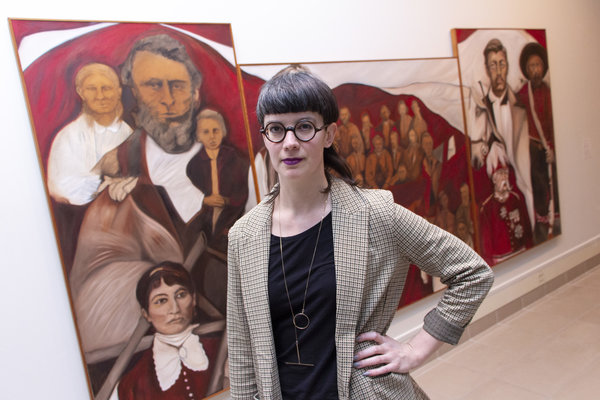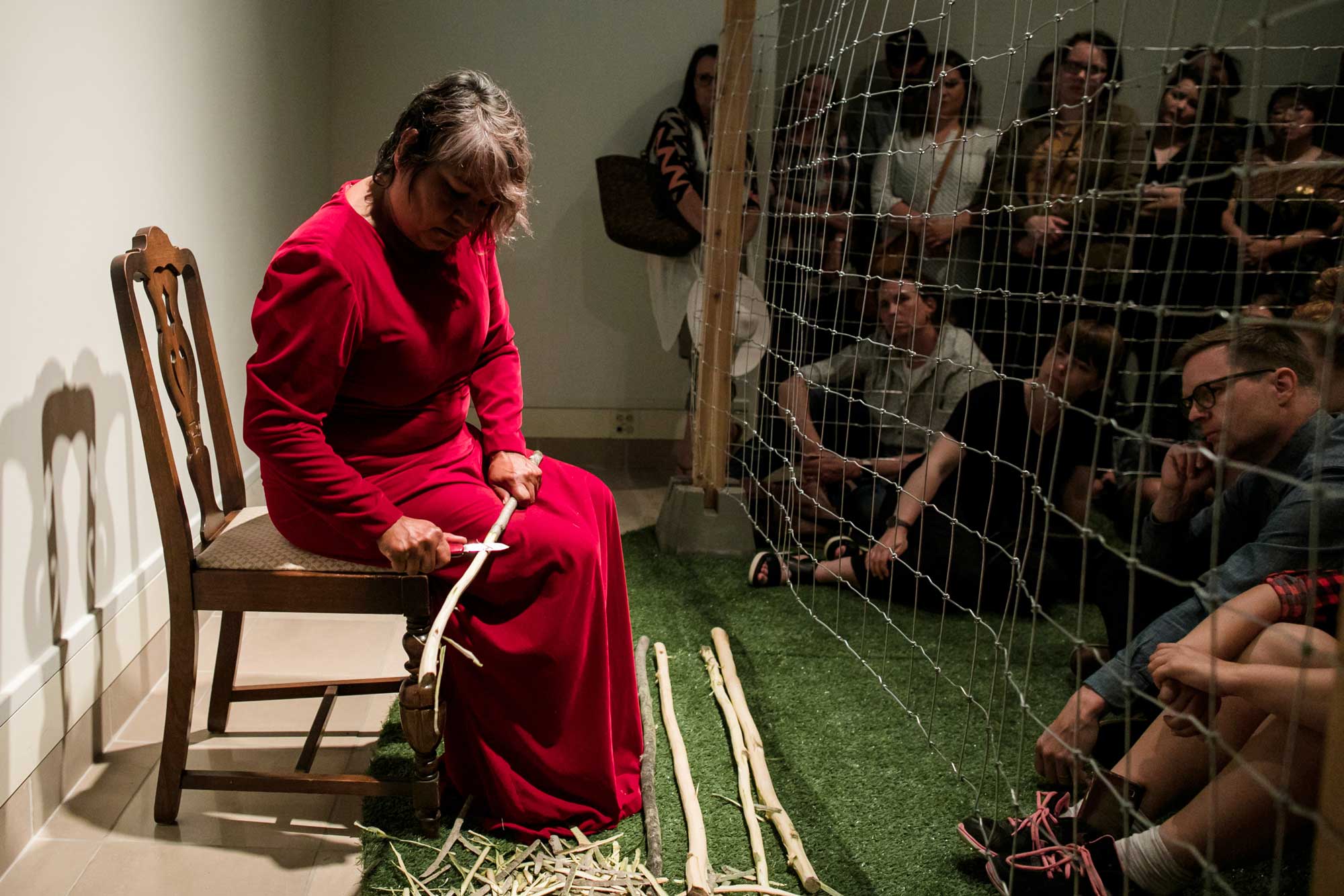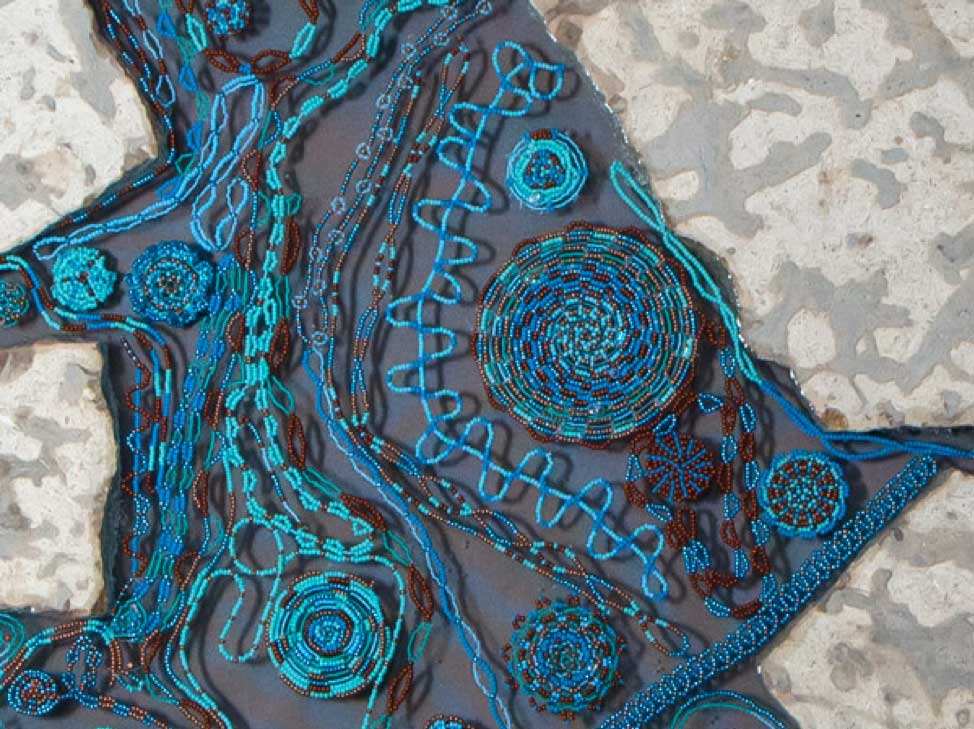The Meaning of Manacihitowin
“Embracing Manacihitowin…translates to let us respect each other. That translates in both Cree and Michif. That first part—Let Us—is actually an invitation to engage in respectful relations…these concepts are embedded right into our backbone document.”
—Dr. Jacqueline Ottmann, vice-provost, Indigenous engagement
Manacihitowin. This Cree/Michif phrase embodies humility and speaks to the spirit of the treaties. It is an invitation to walk alongside, to travel down a path, working together to realize goals and a vision that strengthen all cultures. The University of Saskatchewan (USask) Art Galleries embrace the teachings of manacihitowin, which are drawn from the stories and songs of Elders and Traditional Knowledge Keepers.
As USask’s premiere cultural centre, the Art Galleries and Collection have committed to a framework in which Indigenous people are a vital and vocal presence. We recognize the value and importance to all of a critical dialogue that redefines the meaning of “culture” as respectful, inclusive, alive and fluid and articulates our collective responsibility to embrace it wholeheartedly. To nurture a deep understanding of manacihitowin demands the sharing of stories, histories, lived experience and world views. As in the teachings of Willie Ermine, the Galleries recognize the need to help create and nurture the ethical space that we cohabit and coconstitute. We invite cultural partnerships with Indigenous artists and curators that take the form of exhibitions, artist residencies, performances, talks and discussions, and collection acquisitions.
Building Reconciliation
“Reconciliation is about forging and maintaining respectful relationships. There are no shortcuts.”
—Senator Murray Sinclair, Chair of the Truth and Reconciliation Commission
The Truth and Reconciliation Commission has taught us that reconciliation is a goal that may take generations to realize. It is an ongoing and daily process. We understand that reconciliation is an enduring journey on the part of individuals and institutions, and we are steadfastly committed to actions that contribute to the values, principles and Calls to Action of the Commission’s Report. This requires us to nurture an ethical space in which these relationships can co-exist … The galleries provide a unique opportunity to help create and sustain these ethical spaces as we explore how we relate to each other through the lenses of history, culture, and lived experience. By providing opportunities to create and mobilize knowledge respectfully and with … can bring people together to share their experiences, contribute to individual and collective healing and nourish deeper expressions of reconciliation.
Indigenous Artist in Residence
The Indigenous Artist-in-Residence program, initiated by the University Art Galleries on a pilot basis in 2018, is conceived as a university wide partnership program and initially involved the Gordon Oakes Red Bear Student Centre and Wanuskewin Heritage Park. The residency itself provides an Indigenous artist with opportunities to develop artistic works and engage with the community. In some cases, regular open studio hours offer students, staff, faculty and members of the public the opportunity to meet and talk with the artist, observe their artistic process and engage with them in artmaking. The program aims to recognize and honour the contribution of Indigenous artists, craftspeople and knowledge keepers and creates awareness and appreciation of Indigenous ways of knowing and being.
The pilot phase of the Program concluded in the summer of 2019 having involved Ruth Cuthand, Zoey Roy and Marcel Petit with the advice and guidance of Maria Campbell, Louise Halfe and Dr. Jen Budney.
Renowned Plains Cree artist and USask College of Arts & Science alumna Ruth Cuthand (BFA’83, MFA’92) helped to inaugurate the Indigenous Artist-in-Residence program, inviting all those interested to drop by during open studio hours at Gordon Oakes Red Bear. Cuthand talked to visitors about her art practice as they learned and worked alongside her.
Cuthand’s art addresses themes of colonialism, the history of abuse in residential schools and Indigenous representation in mainstream media and in Canadian politics. She has built up a prodigious body of work in a wide variety of media, including drawing, painting, photography, sculpture and video. Her works are united by a distinctive, raw aesthetic and ongoing focus on the legacies of colonialism and Indigenous-settler relations in Canada.
Exhibitions and Events
Current Exhibition
Joi T. Arcand: she used to want to be a ballerina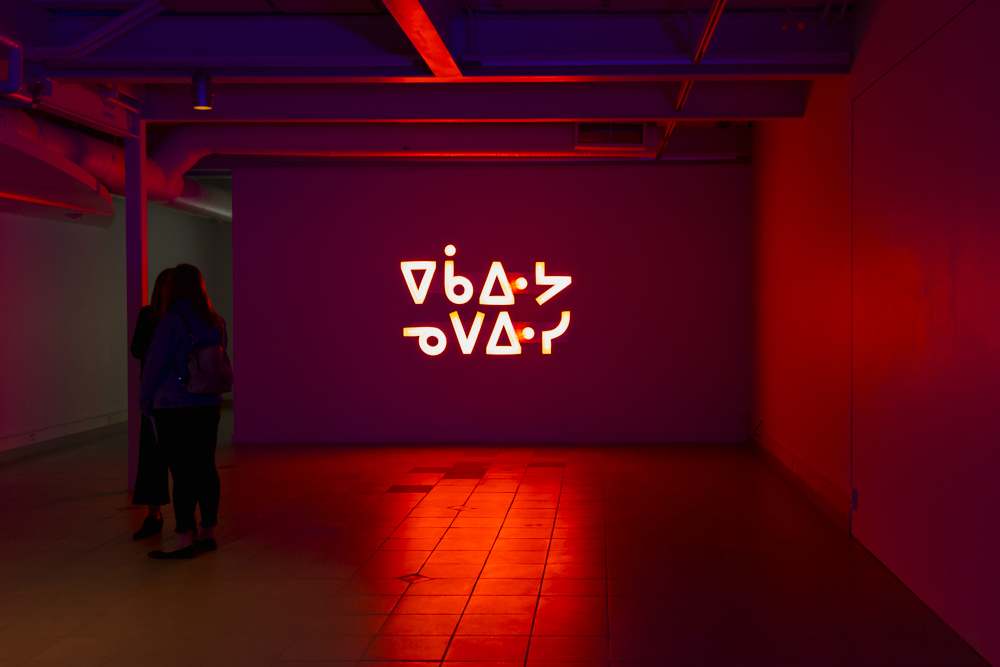
Cree syllabics, neon signs, music by Buffy Sainte-Marie, images of dance and art ’zines: these elements all come together in an exhibition from artist and USask alumna Joi T. Arcand. The multi-media exhibition incorporates neon sculpture, photographic light boxes and ’zines. Curator Leah Taylor notes that Arcand “creates transformative conversations around Indigenous language revitalization by inserting nēhiyawēwin (Plains Cree) language and imagery into public spaces.” Arcand’s early work in graphic art and her current practice imagine what an Indigenized public space could be, by rendering streetscapes and communities with typographic inclusions of Plains Cree language. Her work has evolved to place site-specific neon signage in Cree syllabics throughout the interiors and exteriors of buildings.
Recent Past Exhibitions
The Writing on the Wall: The Work of Joane Cardinal-Schubert
College Art Galleries
February 1 - April 27, 2019
Curator, Lindsey V. Sharman
The Writing on the Wall: The Work of Joane Cardinal-Schubert is an examination of this artist’s work, circulated by the Nickle Galleries. The exhibition reflects the cyclical nature of Joane Cardinal-Schubert’s (1942-2009) work, including pivotal pieces in painting, drawing, printmaking, collage, ceramic, and installation. Although never claiming to be political and rejecting a feminist label, her work recognizes the personal lived life of an indigenous Canadian woman is political.
Organized and circulated by Nickle Galleries with financial assistance from the Alberta Foundation for the Arts and the Canada Council for the Arts.Lori Blondeau | Grace: A Survey
College Art Galleries
June 15 - Aug. 30, 2018
Curator, Leah Taylor
mîkisak ikwa asiniyak ǀ Beads and Stone ǀ Lii rasaad aykwa lii rosh
The USask Art Galleries, in partnership with the Office of the Vice-Dean Indigenous, Indigenous Student Achievement Pathways, Indigenous Artist-in-Residence Program and the College of Arts and Science, presented a new work of art that blends materials and traditions into a symbol of decolonization. Titled mîkisak ikwa asiniyak ǀ Beads and Stone ǀ Lii rasaad aykwa lii rosh (in Cree, English and Michif), the work was created by Plains Cree artist Ruth Cuthand (BFA’83, MFA’92) and Woodlands Cree artist Vanessa Hyggen (BA’17) in collaboration with the campus community. The piece—a broken slab of stone joined together with resin and beadwork—is permanently installed on a wall at the top of the Arts Building ramp.
The creation of the piece began by breaking a slab of Tyndall stone, a symbol of USask’s physical architecture. Tyndall stone—a type of dolomitic limestone from Manitoba—is featured on many buildings throughout campus. Broken pieces of Tyndall stone were integrated with beadwork as a performative and visual step toward reconciliation. Members of the campus community were invited to join Hyggen and Cuthand to create beadwork that was later used to fill the cracks in the Tyndall stone. Hyggen compared the approach to the Japanese practice of Kintsugi, in which broken objects are mended with gold or silver seams to make a stronger and more beautiful item.Indigenous Works in the USask Art Collection
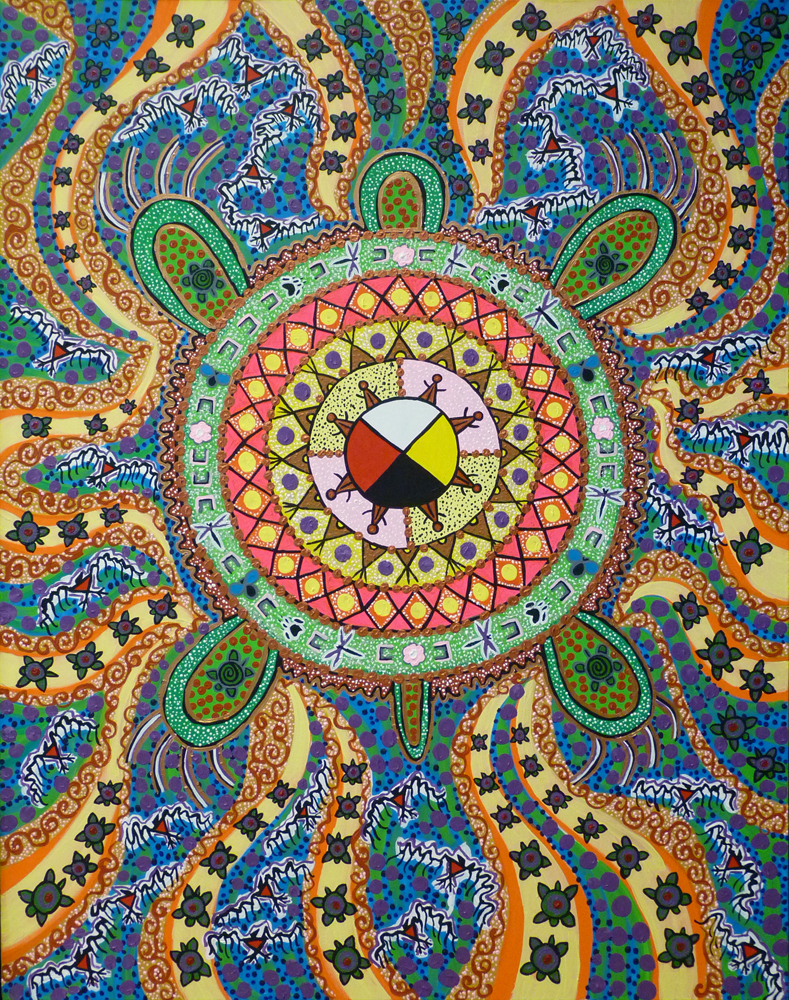 Indigenous representation in the USask Art Collection began with artifacts and portraits by non-Indigenous photographers and painters acquired and commissioned by the university’s first president, Walter Murray. In 1925, Murray commissioned “a dozen studies of Indians for a total cost of $3,000.00” by Scottish-Canadian painter James Henderson (1871–1951. Throughout the 1930s, Murray purchased at least twelve portraits by Nicholas de Grandmaison (1892–1978), a Russian émigré who focused on portraying First Nations people in Southern Alberta.
Indigenous representation in the USask Art Collection began with artifacts and portraits by non-Indigenous photographers and painters acquired and commissioned by the university’s first president, Walter Murray. In 1925, Murray commissioned “a dozen studies of Indians for a total cost of $3,000.00” by Scottish-Canadian painter James Henderson (1871–1951. Throughout the 1930s, Murray purchased at least twelve portraits by Nicholas de Grandmaison (1892–1978), a Russian émigré who focused on portraying First Nations people in Southern Alberta.
These works are important for their documentation of an historical time and place. However, they and their acquisition stories reflect a contentious settler narrative that our university community is actively addressing. Our commitment to reconciliation means that Indigenous culture, knowledge and identity must become a visible and vigorous presence in the galleries and collection.
Acquiring artwork by Indigenous artists—especially works by emerging and established contemporary artists—is an essential part of the Collection’s mandate. Progress has been made toward this goal in recent years, with new acquisitions by Lori Blondeau, Wally Dion, Joi T Arcand, Kevin Pee-Ace, Simone McLeod and Darren Gowan. The holdings also include works by Dennis Bruce, Ruth Cuthand, Mary Longman, Gerald McMaster, Edward Poitras, Jane Ash Poitras, Leah Marie Dorian, Allan Sapp and Jerry Whitehead.
Recent Acquisitions
Lori Blondeau: Grace; 2006, 14 photographs on paper, image: 20 x 20 inches, support: 24 x 24 inches 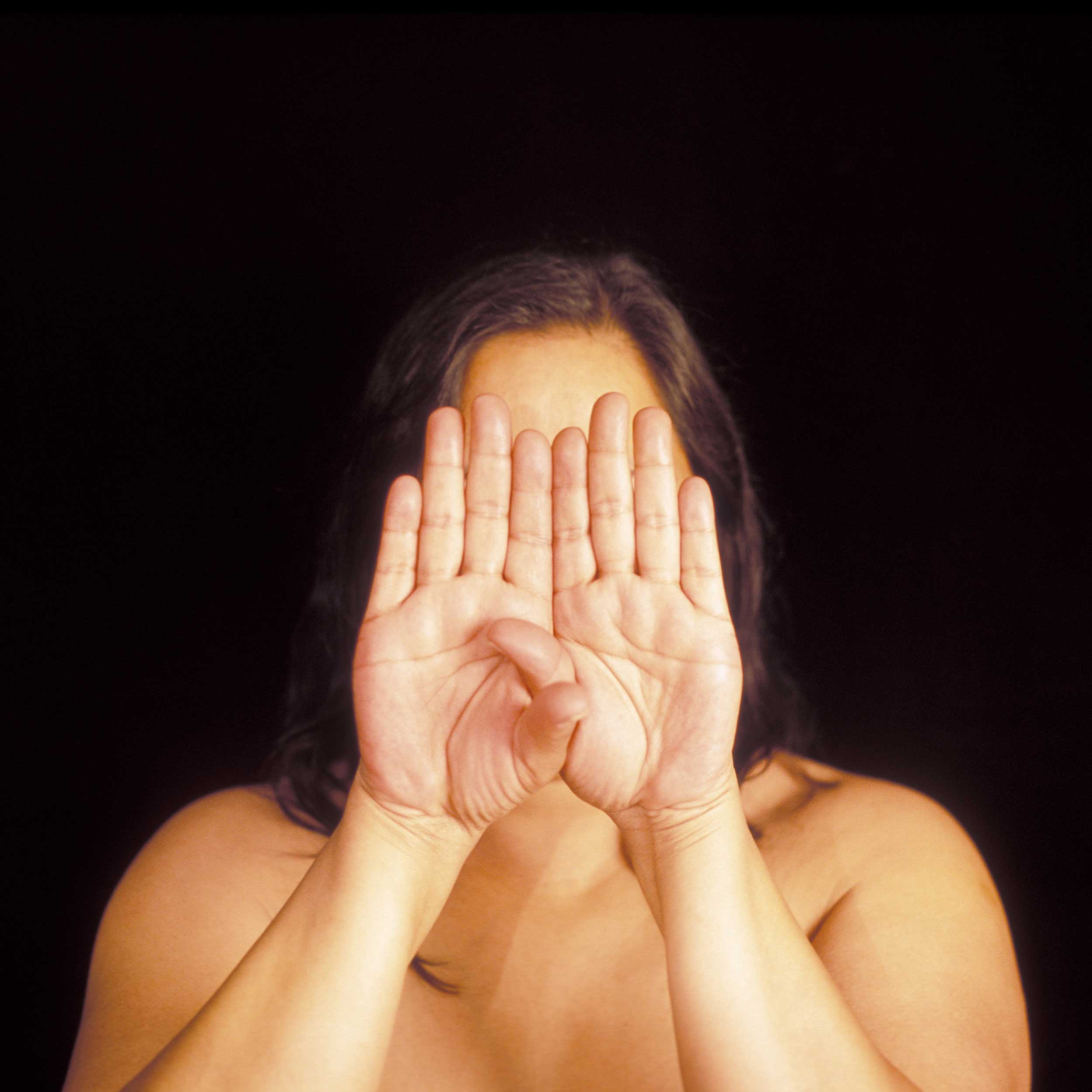
Lori Blondeau: Asiniy Iskwew; 2016 (2018 print edition), 4 photographic prints on archival paper, edition 10/100 + 5 AP, 25.5 x 17.15 cm each
Lori Blondeau (MFA’03) is a Cree/Saulteaux/Metis artist whose work includes performance, installation, video and photographic elements. Blondeau re-appropriates dominant stereotypes and images from popular culture as a way to decolonize from the repression and consumption of Indigenous female identities. By reclaiming this imagery from the colonial gaze, Blondeau points to the racism, trauma and violence endured by Indigenous women. The 14-component set of photographs that comprise Blondeau’s 2006 work titled Grace was recently donated to the collection.
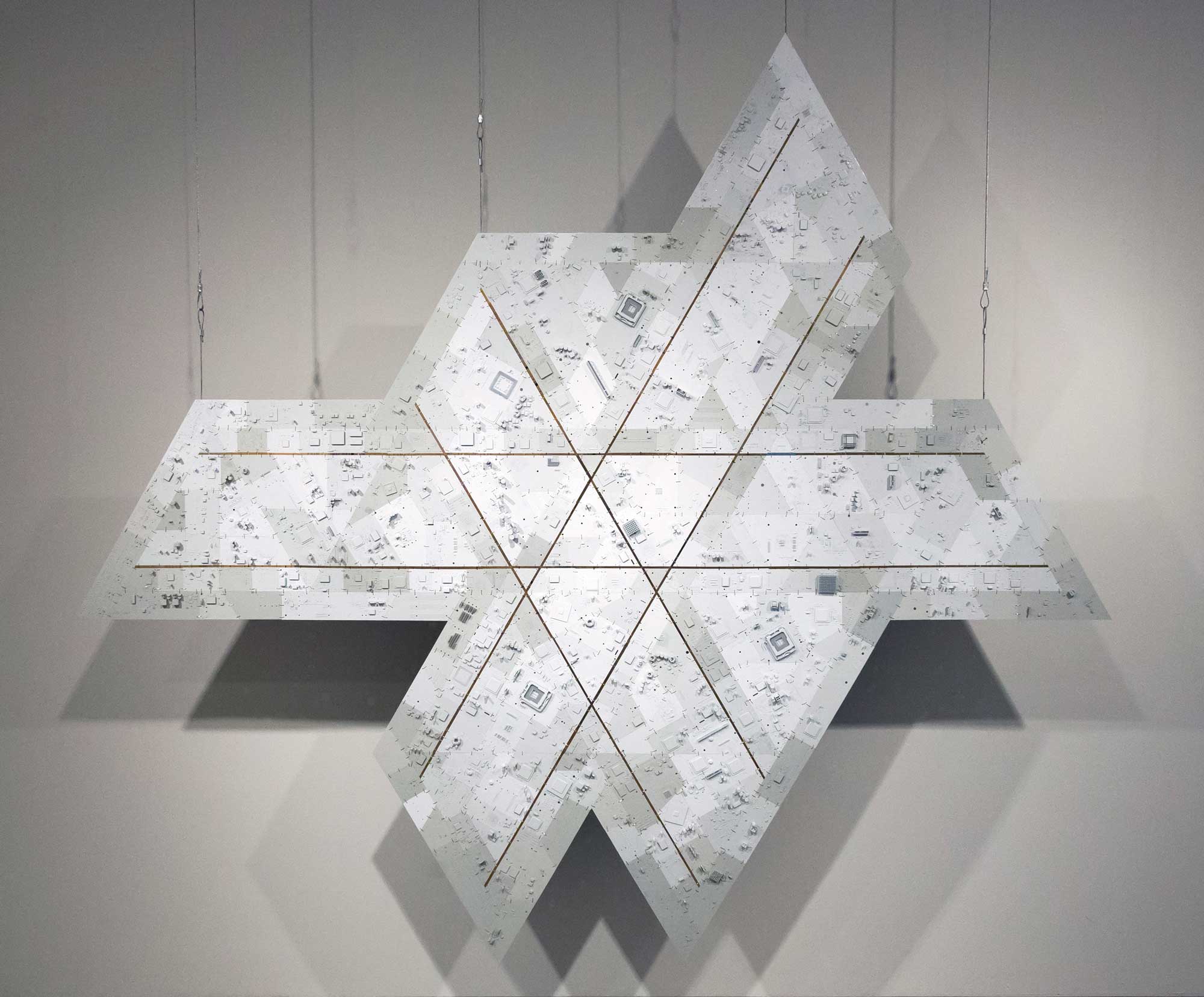 Wally Dion : Icosahedron; 2016, circuit boards, wire, enamel paint, 83 x 90 inches
Wally Dion : Icosahedron; 2016, circuit boards, wire, enamel paint, 83 x 90 inches
Wally Dion (BFA’04) is a Saulteaux member of the Yellow Quill First Nation in Saskatchewan. Icosahedron, a recent sculptural construction, is emblematic of a style of work he developed over a decade ago. In recycling the first-world waste of computer circuitry boards, Dion has developed patterns that recall Indigenous elements, including traditional star blankets, thunderbirds, and in Icosahedron, the teepee motif inherent in this geometrical shape.
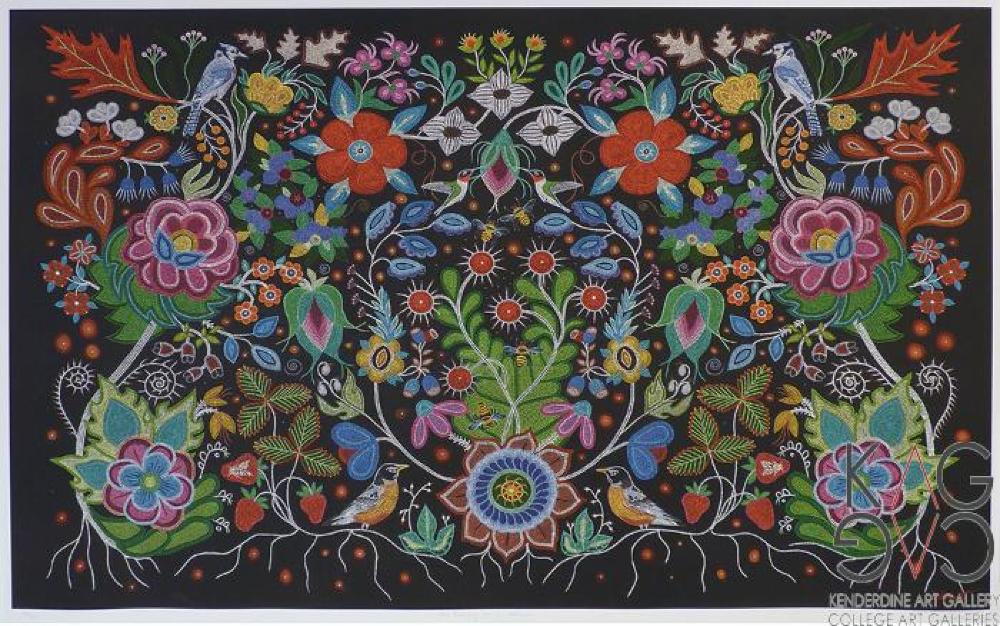 Christi Belcourt : This Painting is a Mirror; print edition 2018, giclee print on archival paper, image : 76 x 121.5 cm, support : 86.5 x 132 cm
Christi Belcourt : This Painting is a Mirror; print edition 2018, giclee print on archival paper, image : 76 x 121.5 cm, support : 86.5 x 132 cm
Christi Belcourt is a Michif (Métis) visual artist with a deep respect for Mother Earth, the traditions and the knowledge of her people. Her paintings often depict floral patterns inspired by Métis and First Nations historical beadwork and focus on questions around identity, culture, place and divisions within communities. She is also known as a community-based artist, environmentalist and advocate for the lands, waters and Indigenous peoples. Her work Giniigaaniimenaaning (Looking Ahead) commemorates residential school survivors, their families and communities to mark the Prime Minister’s historic Apology in 2008 and is installed at Centre Block on Parliament Hill commissioned by the Government of Canada.
Commissioned Work

Kevin Pee-Ace : Celebration and Growth; 2018, acrylic on canvas, 24 x 36 inches
Kevin L. Pee-ace was born in Kelvington, Sask. and is a member of the Yellowquill First Nation and Peter Chapman First Nation. His exposure to art began at an early age, looking at drawings and paintings created by his uncle, Jerry Whitehead. After high school, he completed a fine arts studio diploma program from UCFV in Abbottsford, BC and explored various programs at Capilano College in North Vancouver. After watching his uncle paint and accompanying him to art shows, Pee-ace thought, “Why am I watching him paint when I can do this myself?” He returned to Saskatchewan in 1995 to continue his studies at the University of Saskatchewan, but instead decided to commit himself full-time to his artwork. This led to a collaborative approach in creating class murals with many schools throughout Saskatchewan.
